David Mach is angry. “I’m not the most empathetic, or sympathetic,” the artist says, as if by way of apology, on a sunny Galway morning. We have stepped out of the gallery where he and a team of assistants have been swathing brightly coloured beach balls in resin and plaster; combining them to form what will come to resemble a dense, darkly towering inferno. The wreckage of what was once a pristine Range Rover has already been ploughed into the base, its bonnet blown open, its doors wrenched artfully askew.
It’s an interesting moment of transformation. The bright primary colours of the balls as they peep through their currently white coverings, or drift in piles at the edges to the Festival Gallery, hint at playful seaside days. A small maquette – a scale model of the ultimate piece – predicts their future: clotted with black paint, highlighted by the occasional fiery orange spark. It is entitled The Oligarch’s Nightmare.
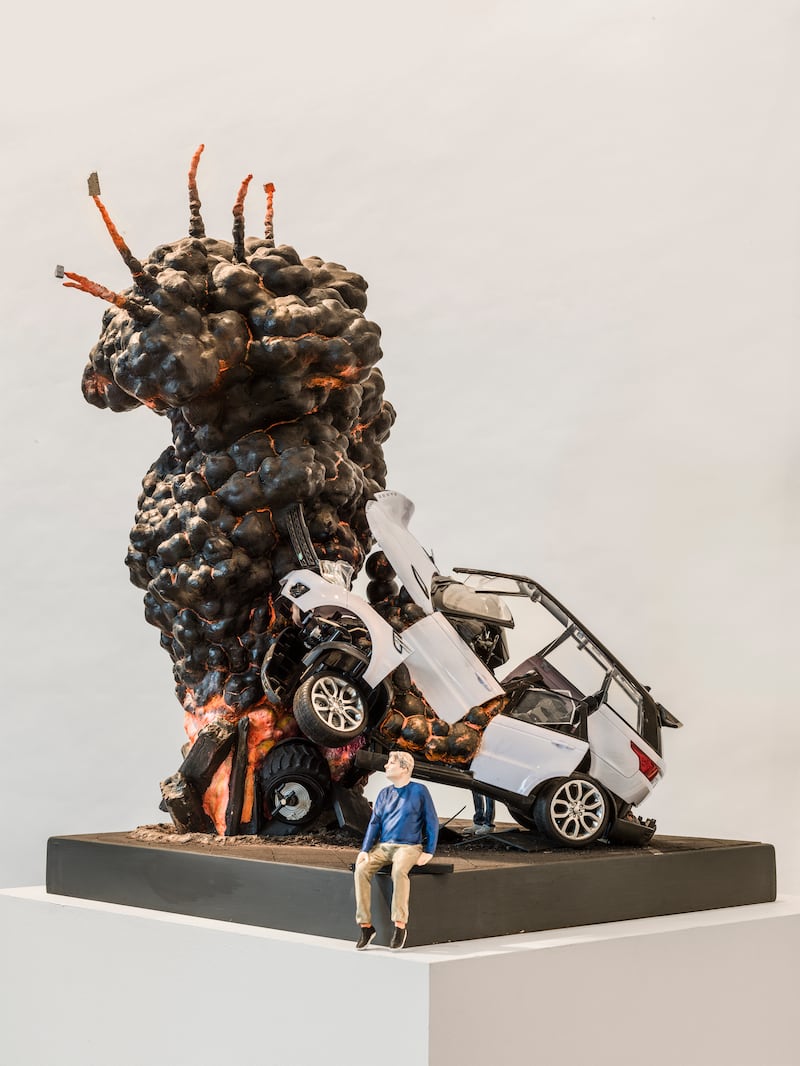
The maquette was previously shown at London’s Pangolin gallery earlier this year, together with more, including towers of busses, dominoed phone booths, sculptural assemblies of miniature shipping containers, a model for a bronze temple ... Witty and thought-provoking, the exhibition offered a glimpse inside the artist’s mind, and many of the models will also be shown in Galway this summer.
“The walls are going to be pink,” Mach says, gesturing at the muted taupe space, previously inhabited by the work of Brazilian artist Ana Maria Pacheco at last year’s festival. It has lain empty ever since, while its future as an arts space is worked out. Like Enda Walsh, Mach is one of the artists with whom the Galway International Arts Festival team has developed an enduring relationship. This will be his fourth presence at the festival, but no one could accuse him of going over old ground.
READ MORE
Mach thinks big. He first came to festival artistic director Paul Fahy’s attention in 1999, when he had made a 70-metre collage presented on 15 panels at London’s Millennium Dome, commissioned as part of celebrations to usher in the year 2000. National Portrait featured thousands of images, submitted by the public, and gathered by the artist including clips of famous paintings, photographs and magazine cuttings. “It’s going to be like being machine-gunned with information,” he said at the time. But as with the collages he showed as part of his Precious Light exhibition at Galway in 2012, the experience is somewhat different, and even though both sets of works contain darkness, their essence is more to do with a celebration of the often cacophonous but always glorious plurality of humanity.
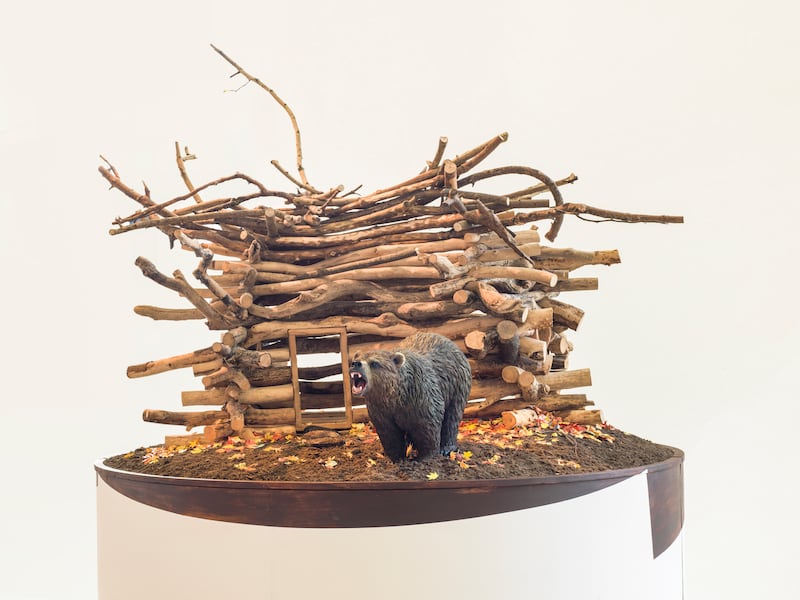
Despite what he says, or might like to think, there is a sensitive side to Mach, and an empathy that is at odds with the provocative persona that he wields like a shield. He says “F**k” a lot, which doesn’t trouble me, because so do I, and he has a complex intelligence that makes his anger unsurprising, given the state of the world we’re in. “It started with Maggie Thatcher,” he says, and he’s probably right. Thatcher’s famous declaration in a 1987 interview in Woman’s Own magazine that “there’s no such thing as society. There are individual men and women ...” was a viewpoint that crystallised the atomisation of society and the every man (or woman) for themselves attitude that is an architect of our present undoing.
For someone who declares he has no empathy, Mach cares deeply about society, and about people. His conversation is peppered with ideas, politics and self-deprecation, coupled with a certain amount of paradoxical but well-deserved pride. He is, after all, a Royal Academician, and has been a Turner Prize nominee and a professor at Dundee University. He is incredibly prolific as an artist, and has recently been working on parallel architectural projects including with a university in Damascus. He plays music in a band, and now, at the age of 67, he is expecting the imminent arrival of a baby with his partner, print-maker Lyndsey Gibb. “In a week,” he says, adding that he’s still kind of in denial. “It’ll be different when I hold it in my hands.” Mach’s wife Lesley, who he met when they were both teenagers, and with whom he worked closely as a fellow artist, died in 2014. “I feel like I am starting again,” he has said, both of his impending fatherhood and the post-Covid influx of artistic possibilities and projects.
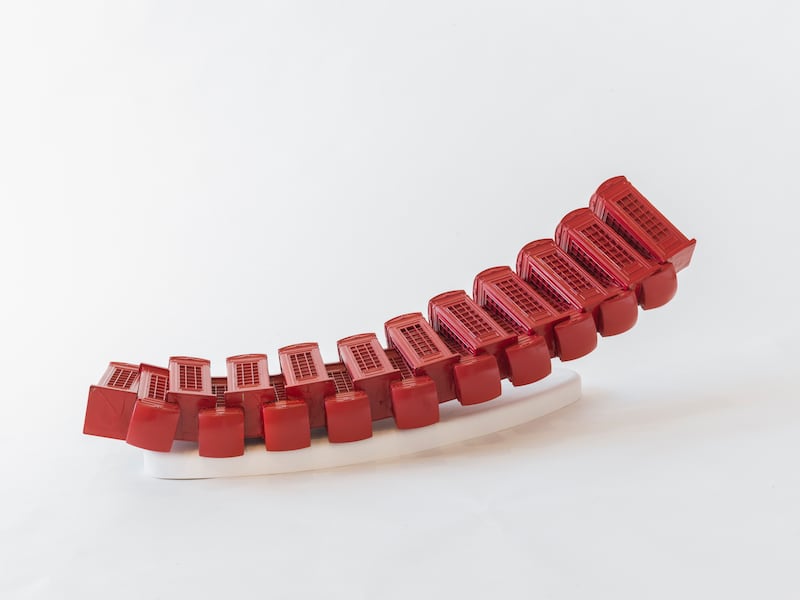
“I used to drive along,” he continues, “and make lists in my head of everything I was never going to do. And then at a certain point I thought f**k it, and I’m doing them.” Paul Fahy began chatting with Mach in 2001, and in 2006, the year Fahy became Galway’s artistic director, he made his festival debut, with Hellbent, a fire-spitting sculpture at the entrance to the then new Galway City Museum. Precious Light followed six years later and included a huge crucifixion made from steel and wire coat hangers. In 2018, Rock ‘n’ Roll saw the artist jack-hammer a hole in the Galway gallery floor, into (or out of) which a yacht, car and caravan slewed, along with piles of newspapers.
Mach grew up in Fife, the son of a Polish miner who had moved to Scotland after having been imprisoned by the Soviet authorities in the 1930s. “He was very charming,” Mach told me during a previous interview. “He was the most positive guy you’d ever meet. He’d tell these terrible stories with the most positive energy.” His mother was the opposite. From a large family, she had been “sold” by her own mother to a childless couple. “An act of kindness,” as Mach describes it, “that ruined my mother […] sometimes her depressiveness would take your breath away.”
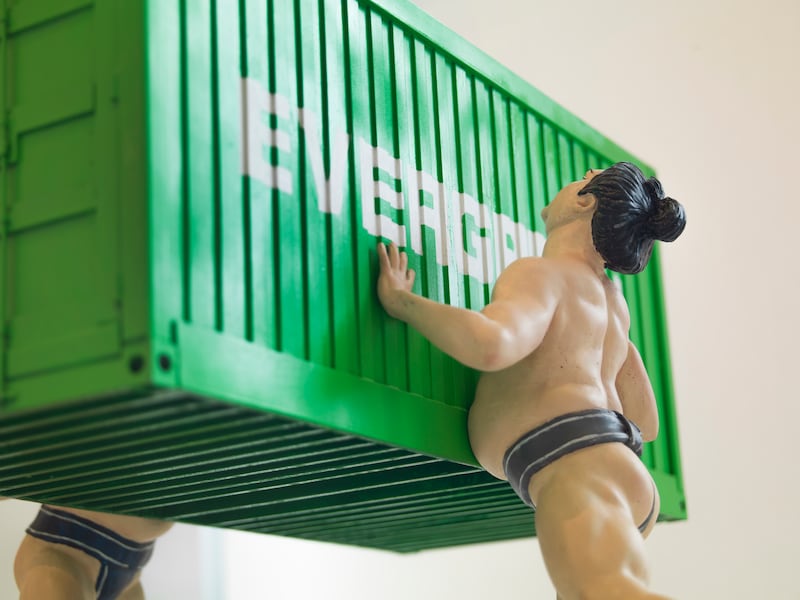
Mach seems to spin between these two states, as well as numerous other apparent opposites. He is charming, but furious; hugely energetic, but with a bleak world view; very funny, but deadly serious; disparaging of the art world, and yet hugely successful within it. “I want to be an ideas monger,” he says, describing how, in the days before mobile phones, Elvis Costello, an artist he admires greatly, might catch a tune in his head while out walking and go to a phone booth and hum a few bars into his answering machine to keep it safe. “I’ve got those things floating about,” he says, meaning his myriad moments of inspiration. “So I’ll make them up or collage them, and then I’ll find someone or someone will find me. To make it happen is the most important thing.”
And what about the nightmare of the aforementioned oligarch? Are the obscenely wealthy on a collision course with disaster, or will they sail through the chaos their actions and collective greed are unleashing unscathed, while the rest of us suffer the consequences? I tell him it’s making me think of the final scene in the first Terminator movie where a small boy says, “There’s a storm coming in.” “I know,” responds Linda Hamilton’s character grimly. I’m also thinking of John Lydon’s lyric in Rise, the Public Image Ltd song from 1986, that “anger is an energy”. I ask Mach if the nightmare he’s sculpting is wishful thinking.
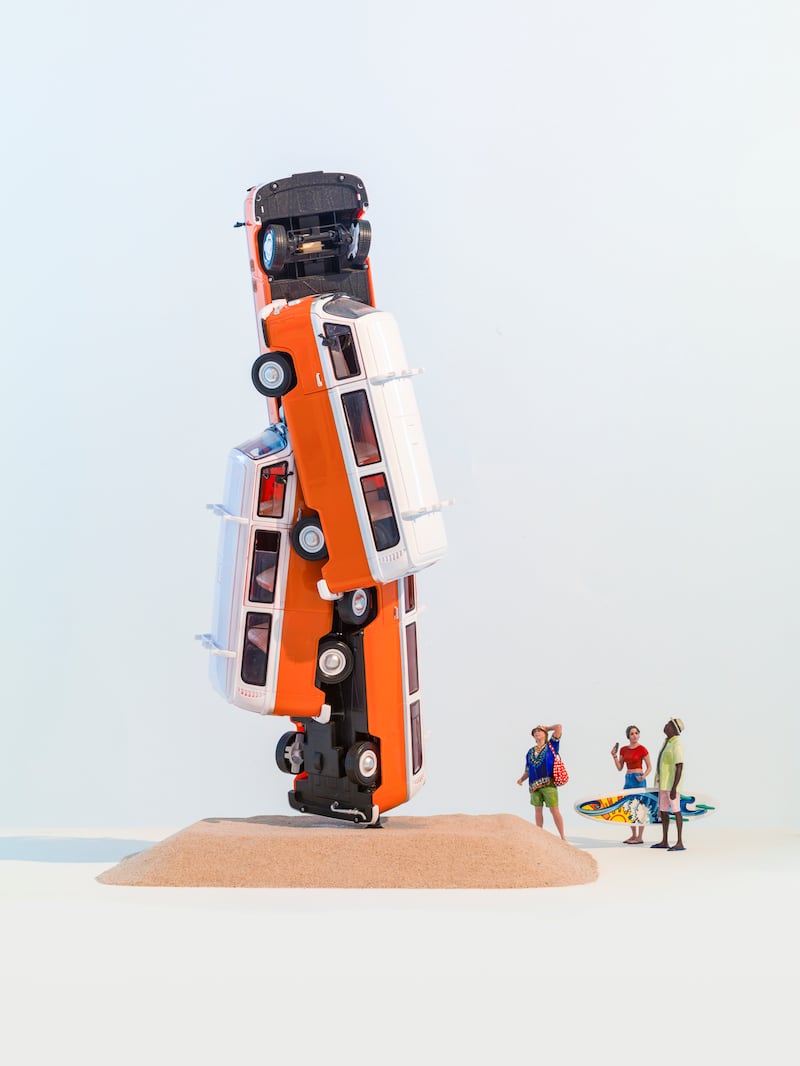
“A storm would do me good,” he replies. “If there’s a revolution coming, I hope it’s coming bloody soon, and I’ll be in it. If you’re paying people to look after the country, they should be doing that. So I’m ready for something. It’s very, very bad. They’re making people poor, they’re making people hungry. We’re coming to get you,” he says, talking about both oligarchs and politicians. “We don’t need to f**k about and not sort things out. We need to do it, for God’s sake. They’re proving how corrupt they are every day. Let’s get rid of them.” Talking to him, it seems pretty unreasonable that we haven’t started the process sooner.
David Mach’s The Oligarch’s Nightmare is at Galway International Arts Festival, taking place from July 17th to July 30th; admission free; giaf.ie
Visual arts at the Galway Arts
With the Festival Printworks Gallery back in action, alongside the William Street Festival Gallery, plus venues around town, the visual arts programme at Galway has lots to offer.
Diana Copperwhite, Onomatopoeia: Copperwhite’s large brightly coloured canvases satisfyingly blend abstraction with hints at the recognisable. Festival Printworks Gallery
Ruby Wallis, Whistling in the Dark: Photography, film, collage and sound feature in a show based on the artist’s fascination with taking walks after dark. Galway Arts Centre
Grafton Architects, Wordspace: Sound installation pavilion featuring recorded extracts from Ulysses, read by Olwen Fouéré. Salthill Promenade
Lorraine Tuck, Unusual Gestures: Powerful photography focusing the lens on Tuck’s own family, living with autism spectrum disorder and intellectual disability. Tender, moving and uplifting, curated by Photo Museum Ireland. Festival Printworks Gallery
Find more at Engage Art Studios, Outset Gallery, University Hospital, Kenny Gallery, 126 Artist-Run Gallery, Galway City Museum and Interface in the Lough Inagh Valley.





















